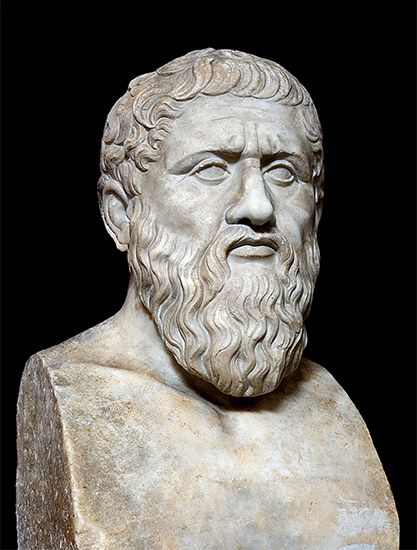The Secrets of Nature and Human Happiness
Mathematics is the study of uncovering the secrets of nature.
We can create something that brings happiness to people by uncovering these secrets. So, what is the relationship between human happiness and the secrets of nature? People are components of nature. Therefore, the secrets to making people happy lie within nature. Modern individuals face a significantly high risk of cancer due to poor eating habits, environmental pollution, and stress. For example, let’s consider a person who has been diagnosed with cancer. Since humans are elements of nature, this situation presents a serious issue not only for the individual but also for nature. However, nature has the ability to resolve its problems through a process of self-purification.
Cancer treatments may not be readily visible to us. However, they exist in nature in the form of various compounds. Therefore, cancer treatments are not something to be invented but rather discovered.
Then, how can we make people happy today? People could find happiness if something could comfort their loneliness and consider their subtle emotions. Additionally, the ability to live long and healthy lives is closely tied to happiness. The realization of dreams of extending life can be achieved through the development of new drugs, preventive and predictive medicine, various medical diagnostic devices, and technological tools.
Mathematics is the study of uncovering the secrets of nature. By discovering these secrets, we can create something that brings people happiness. Collectively, we refer to the innovations closely related to people's happiness as advanced industrial technology.
Mathematics is the foundational technology for all advanced industries. A country's proficiency in mathematics reflects its national competitiveness.
Mathematics is the Study of Uncovering the Secrets of Nature
The idea that mathematics is a discipline for uncovering the secrets of nature became firmly established in ancient Greece. The Greeks’ desire to understand the real world led to the creation of numerous mathematical theories, which in turn became the driving force behind the high regard for these theories. For them, mathematics was a method of exploring nature and the key to revealing the secrets of the natural world and the universe. The Greeks regarded mathematical laws as integers that embodied the structure of nature.
In contrast, ancient civilizations before the Greek era viewed nature as chaotic and incomprehensible. People feared nature, believing that all natural phenomena to be the whims of the gods. So, when there was a drought, people performed religious rituals to pray for rain, and when an epidemic spread, they prayed to appease the angry gods. They continued to perform the rituals until it rained and prayed to the heavens until the epidemic subsided, which led them to rely even more heavily on the existence of deities.
As the Greek era unfolded, an increasing number of intellectuals began to view nature through a rational lens. The Greeks began to question the belief that gods controlled humans and nature and instead strived to understand nature through rational and analytical methods. As a result, myths and religions were rejected. A new belief emerged that nature not only operates according to hidden laws but also contains order within itself. The role of mathematics was crucial in fostering the conviction that people could understand nature through rational actions.
Plato instilled a firm belief that we can understand natural phenomena and grasp our material world through mathematics. He argued that, since the material world is an imperfect replica of the ideal world, mathematicians and philosophers should engage with the ideal world. Plato went a step further than the Pythagorean school, which sought to understand nature through mathematics, by believing that nature itself could be replaced by mathematics. He believed that once we could roughly grasp fundamental truths through the observation of nature, we could then pursue truth solely through rational activity. For Plato, this rational activity was mathematics.

Mathematics in Advanced Industrial Technology

The field of biomimetics demonstrates how uncovering nature's secrets can develop advanced industrial technologies that bring people happiness. For a long time, humans have mimicked and applied the forms of nature to advance science and technology. Of course, initially, this process involved using the natural forms directly as they were. For example, humans used sharp animal teeth or bones to make knives or spears, and they split or ground stones to create more durable tools. There were cases where natural forms were used as they were, but many instances also involved harnessing the principles hidden within nature. Observing that wood floats on water, people made rafts, and they extracted silk threads from cocoons to make clothing. This process of developing new technologies by utilizing the forms and principles found in nature is called "biomimetics."
Biomimetics is a term derived from the Greek words "bios," meaning life, and "mimesis," meaning imitation or mimicry. It is the study of researching and imitating design elements or characteristics of living organisms found in nature. Although we have imitated nature for centuries, most efforts were limited to mimicking the forms. However, biomimetics technology is rapidly developing with the advancement of observational tools and manufacturing technologies today. The most familiar example among the human efforts to imitate nature is Velcro, commonly known as "hook-and-loop" fasteners. In 1948, George de Mestral invented Velcro after observing that the small hooks on burdock burrs clung well to animal fur. One side of Velcro is shaped like hooks, which stick to the other side covered with fibers. With the introduction of Velcro, people’s lives became incredibly convenient. Velcro has replaced buttons and zippers in many products, such as clothing, shoes, and bags. Recently, its applications have expanded even further, including securing objects in a weightless environment aboard spacecraft.
Mathematics Responsible for Physical and Mental Health


Finding a treatment for a disease does not mean developing a new substance that has never existed before. The cure already exists in nature in the form of certain compounds. A prime example of a treatment found in nature is aspirin. Historical records show that Hippocrates used aspirin. Ancient Middle Eastern regions, such as Sumer, already knew that aspirin had pain-relieving and fever-reducing effects. The fact that it was used long before modern pharmaceutical technologies were developed shows that aspirin originated as a natural medicine. The water extracted from boiling willow bark is essentially what makes up aspirin. In the 1830s, scientists discovered the medicinal effects of a compound in willow bark called "salicylic acid." However, much like the saying, "good medicine tastes bitter," salicylic acid had a terrible taste that made it difficult to consume and caused severe stomach issues. In 1897, Felix Hoffmann solved this problem by mixing acetic acid and salicylic acid, creating the first aspirin. At that time, aspirin was found to be effective for typhoid and rheumatism, but it was mainly used as a pain reliever, fever reducer, and anti-inflammatory agent.
To modern individuals, mental health is as important as physical health. While modern people build relationships with countless others, both online and offline, they are inherently lonely beings. Unlike in the past, when multiple generations lived together, many people nowadays often live alone and apart. As time spent alone has increased, there arises a growing need for machines or technological devices that can soothe loneliness and address the subtle emotions of individuals. Modern people rarely put down their smartphones, except when sleeping. We even play games or browse the Internet while walking down the street. For those who fear being alone, even for a moment, smartphones serve as a channel for communication and interaction with others. They exchange text messages and photos to confirm each other’s presence and, at the same time, to momentarily forget their own loneliness.
Advanced industrial technology can soothe loneliness, carefully consider subtle emotions, and concretely realize people's dreams of extending life. Mathematics is the fundamental technology behind all advanced industries. Therefore, the level of a country's mathematical proficiency directly correlates with its national competitiveness.

